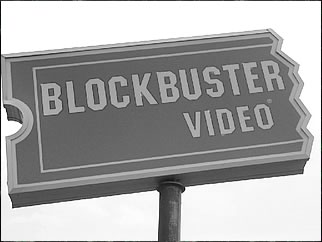 Forbes: Big video-rental chains have been kicking small shops in the teeth for years–which makes Christine Min’s feat all the more impressive. Last month Min celebrated the first-year anniversary of her store, Get Reel Video, in Brooklyn, N.Y. Better yet, she is already in the black.
Forbes: Big video-rental chains have been kicking small shops in the teeth for years–which makes Christine Min’s feat all the more impressive. Last month Min celebrated the first-year anniversary of her store, Get Reel Video, in Brooklyn, N.Y. Better yet, she is already in the black.
Carve out a niche. If you don’t have the muscle to go head to head in a given product line, try another. While the big chains generate roughly 85% of their revenues from new releases, Nolan Anaya, owner of Amherst, Mass.-based Captain Video, aims for more like 50%.
Customer service matters. Wu, a movie buff, says he can take a chance on stocking unusual titles because his customers value his recommendations. “I started recommending it, and it’s become our No. 1 renter of all time.
Offer complementary products. To boost sales, some small retailers have branched into pizza, phone retailing and even fake tanning. “So many people put blinders on and think of themselves as a video rental store,” says Ken Dorrance, owner of Alameda, Calif.-based Video Station, which also peddles pizza and, starting this year, cellphones.
Craft flexible payment schemes. When Blockbuster did away with late fees two years ago, Alan Milligan, owner of Memphis-based Marquee Movies, responded by letting his customers prepay for rentals and rack up points, similar to a credit card rewards program. “We had to become creative,” he says. “We’re all learning how to react to the changing market.” The free popcorn doesn’t hurt either.
The Rebirth Of The Small Video-Rental Shop [Forbes]
Category: How-To Guides
How To Check Out Your Competitors

StartupStudents: Today we’ll be discussing ways to gather intelligence on your competitors. This can be useful in a variety of ways such as identifying cutomer habits, picking up on competitor workflow processes, and so on. With such fierce competition in todays market along with ever changing consumer opinions, it’s imperative that you stay one step ahead of your competition.
Quickly, here are some things to think about when checking out your competition.
* Remember that your competition is not necessarily who you think it is
* Your customers determine who the competition is by patronizing those establishments
* Be sure to broadly define your competition at the start, and carefully move inwards through the industry to determine all competitors.
And now for a few pointers on checking out your competition:
* Pretend to be a customer
* Talk to the business owners and find out as much as you can from them
* Talk to their customer’s and get a feel for why they utilize your competitors service or product
* There are tons of great resources out there, so use them! Internet, public filings, local libraries, etc.
* Go to industry trade shows, seminars, and conferences
* Complete a competitive matrix
Checking Out Your Competition [StartupStudents]
How To Increase Profits

Businessknowhow: Over the years, we have helped many companies grow profitably, using simple, common-sense tactics for cost savings that go directly to your bottom line! And it’s the little things that count – a ten percent increase in profit is more likely to come from twenty things that contribute one-half percent each than from one thing that gives you the full 10 percent.
1. Improve Collections. Rather than wait for a bill to be past due, call the customer the day before the payment is due.
2. International Payments. Payment is slower in other countries. So, if you do business there, you better adjust your prices to reflect these slow collections.
3. Accounts Payable. With each vendor, work out an agreement to delay payments or spread them out.
4. Improve Cash Flow. By improving cash collections and delaying cash payouts you have improved cash collections.
5. Save Pennies. Reduce costs wherever you can.
6. Reduce Cost Of Your Office Supplies. Go through your past invoices and highlight the office supplies that make up 80% of total dollars spent.
7. Telephone Control. Make sure you are getting six-second increment billing with no minimum per call.
8. Your 800 Number. Consider a toll-free telephone number for customer service or to tie locations together seamlessly.
9. E-Mail Rather Than Telephone. Use e-mail rather than playing telephone tag and incurring unnecessary long-distance telephone charges.
10. Do Your Own.
Improving the Bottom Line [Businessknowhow]
How to Soup Up Web Site Content

NFIB: On the Web, content is king–or it should be. If you want people to visit, stick around and come back to your small business’ Web site, give them substance. The appearance of your Web site is still important in helping establish professionalism and credibility. But the information and other substantive material you provide matter most.
One study, from the Poynter Institute and Stanford University, showed that, unlike with newspapers and magazines, people who read Web news sites typically focus on the text first, looking at photos and graphics afterward. People on the Internet operate in “Internet time” or, in other words, fast. They don’t linger over Web pages as they would a newspaper or magazine when drinking a cup of coffee.
People reading Web sites, for the most part, seek substance over style and usefulness over flash. They want to get what they want quickly. Here are some ways to make this happen:
-Readers should know immediately upon accessing your site why they should stick around and what’s in it for them.
-Make background information about yourself or your organization available from the home page, if appropriate.
-If your site consists of more than a few pages, provide a site map or index that displays all the interior links for those who want to get their bearings from the outset.
-It’s usually better to keep text brief. Break up long passages into multiple pages.
-Text should be accurate, complete and interesting.
Beefing Up Your Web Site Content [NFIB]
How To Build A Cash Pool

Businessknowhow: Although your income statement might show a healthy profit, it doesn’t amount to a hill of beans if you have no cash flow.
Cash flow represents the amount of money coming in to your business through services rendered and products sold, and money going out to cover expenses and production costs. Your primary responsibility as a home-based business owner is to ensure the flow is consistent with more money coming in than going out so a pool starts to form to hold the overflow.
Integrate these seven simple rules to your operating strategies and enjoy the benefits of a steadily growing cash pool.
1. Request payment prior to delivering your product or service.
2. Pay every bill on time to avoid late payment charges and earlier only if special payment discounts apply.
3. Deposit payments as soon as you receive them.
4. Use a business credit card whenever possible for travel, meals, and minor expenses.
5. Create continuity sales.
Build A Cash Pool For Your Home-Based Business [Businessknowhow]